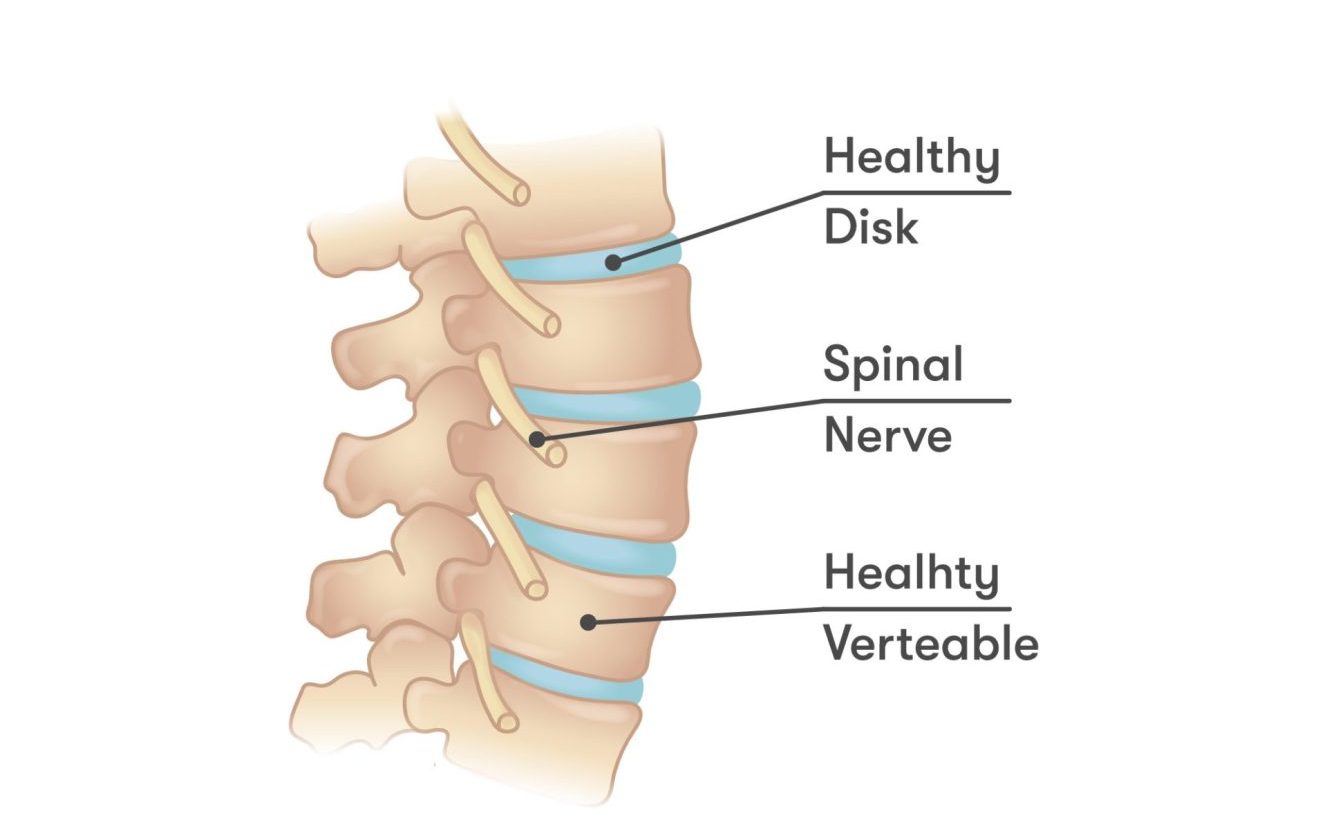Discogenic pain (potentially diagnosed as disc bulge, herniation, or sequestration) refers to pain caused by an issue with the intervertebral discs in the spine. These discs act as shock absorbers between the vertebrae, and when they become damaged or show wear, they can cause pain and other symptoms.
A disc bulge is a condition where the outer layer of the disc is damaged, causing the inner material to push outwards. This can put pressure on the nerves and surrounding structures, causing pain and other symptoms. A herniated disc, on the other hand, is when the inner material of the disc escapes through the outer layer, which can place pressure on the nerves and surrounding structures. A sequestration is a condition in which a piece of the disc completely breaks off and can press on the nerve roots.
Symptoms of discogenic pain can vary depending on the severity of the condition, but they often include lower back pain, stiffness, and muscle weakness. Pain may be felt in the lower back, legs, and sometimes feet, and it can be accompanied by tingling, numbness, or weakness in the affected area.
Treatment for discogenic pain typically involves a combination of physiotherapy, medications, and self-management strategies. Physiotherapy can help to reduce inflammation, improve flexibility and strengthen the lower back and legs. Medications, such as nonsteroidal anti-inflammatory drugs (NSAIDs) and muscle relaxants, can help to manage pain and inflammation.
In addition to these treatment options, there are several self-management strategies that can help to reduce the symptoms of discogenic pain. These include:
Gentle stretching exercises: Gentle stretching can help to improve flexibility and reduce stiffness in the lower back and legs.
Strengthening exercises: Strengthening exercises target your core strength and the back and leg muscles. This helps to improve the stability of the lower back and reduce the risk of future injuries.
Good posture: Maintaining good posture can help to reduce the strain on the lower back and reduce the risk of injury.
Hot and cold therapy: Applying heat or cold to the affected area can help to reduce pain and inflammation.
Applying the 5 stages of rehab to discogenic low back pain.
Pain: Following an acute injury, the primary focus is on reducing pain and inflammation. Physiotherapy techniques including mobilization, muscle release, dry needling and gentle stretching exercises will often effectively reduce pain and help settle inflammation. Depending on the severity of the injury, medications, such as NSAIDs and muscle relaxants may be required.
Range of motion: Once the pain and inflammation have been reduced, the focus shifts to restoring range of motion in the lower back, hips, and legs. This may involve the use of physical therapy techniques such as neural glides and slides, as well as exercises to improve flexibility and mobility.
Motor control: The next step is to focus on improving motor control in the lower back, hips, and legs. This may involve exercises to improve stability and balance, as well as techniques to correct muscle imbalances or compensations that may be contributing to an overload of the lumbar discs.
Strength: Once range of motion and motor control have been restored, the focus shifts to strength training. This typically includes exercises to strengthen the core, back, and leg muscles, as well as techniques to improve muscle endurance and the ability to tolerate higher functional demands.
Maintenance: The final stage of rehab is to maintain the gains made during the previous stages. This may involve continuing with a regular exercise program to maintain strength, flexibility, and mobility, as well as adopting self-management strategies to prevent the return of symptoms.
It is important to note that the duration of each of the 5 stages will vary depending on the individual, and it is important to work with a physiotherapist to create a personalized treatment plan that meets your specific needs and goals.
For more information regarding lumbar disc pain please see:
https://www.betterhealth.vic.gov.au/health/conditionsandtreatments/back-pain-disc-problems
https://www.healthdirect.gov.au/spinal-disc-problems


